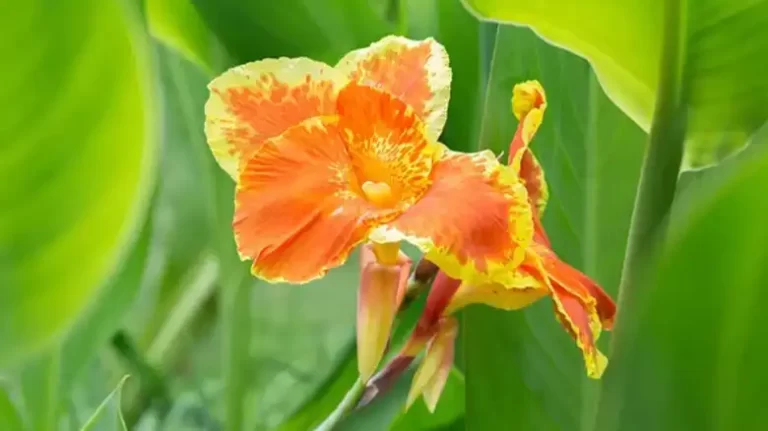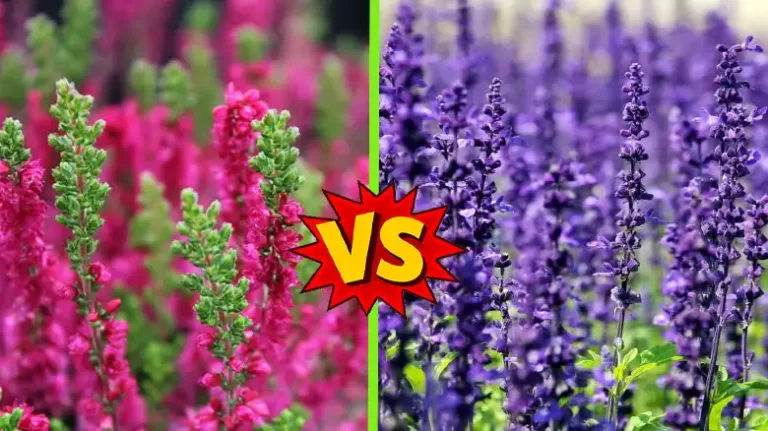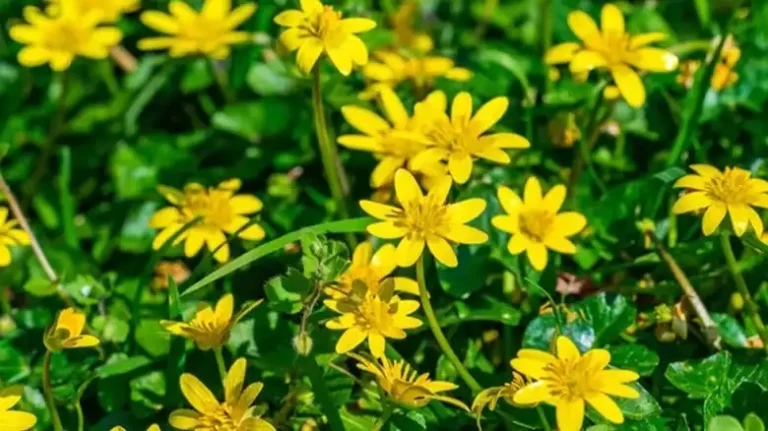How to Prune Basil Flowers
When it comes to cultivating basil, one of the essential practices to ensure a healthy and vibrant plant is pruning. Pruning basil flowers might seem counterintuitive at first, but it’s a crucial step in promoting vigorous growth and ensuring a bountiful harvest of basil leaves.
In this comprehensive guide, we will delve into the intricacies of pruning basil flowers, covering everything from understanding basil flowers to the best techniques and tools for the job.

Understanding Basil Flowers
Basil, with its delightful aroma and versatile use in the kitchen, is a favorite herb for many gardeners. However, as basil plants mature, they inevitably produce flowers. While these basil blossoms might appear delicate and beautiful, they can impact the overall health and flavor of your basil crop.
What Are Basil Flowers?
Basil flowers are the small, delicate clusters of blossoms that appear atop basil plants as they grow and mature. These flowers can range in color, with some varieties displaying white or purple blooms. While basil flowers can be visually appealing, they signal a critical stage in the plant’s lifecycle.
The Role of Basil Flowers
Basil flowers serve a specific purpose in the life of the basil plant. They are the reproductive organs responsible for producing seeds. Basil plants rely on these flowers to attract pollinators, such as bees, butterflies, and other insects.
The Impact on Leaf Production
For those cultivating basil primarily for its lush leaves, the appearance of basil flowers can be a bit of a double-edged sword. As basil plants invest energy into producing flowers and seeds, their leaf production often declines.
Tools and Materials Needed to Prune
Pruning basil flowers is a straightforward yet essential practice for anyone looking to enjoy healthy basil plants with abundant leaves. To get started on this journey, you’ll need a few basic tools and materials that are easy to acquire.
1. Pruning Shears
Pruning shears are your primary tool for precise and clean cuts. They are designed specifically for this task, ensuring that you trim the basil flowers without causing unnecessary damage to the plant. You can find pruning shears at most garden supply stores or online.
2. Clean Cloth or Paper Towel
Having a clean cloth or paper towel on hand is often overlooked but incredibly important. After each cut, it’s a good practice to wipe the blades of your pruning shears with the cloth or paper towel. This helps prevent the potential spread of diseases or pests between different plants in your garden.
3. Gloves
While not mandatory, wearing gardening gloves can be a smart choice. They protect your hands from dirt, potential irritants, and any sharp edges on the basil plant. Plus, they keep your hands clean during the pruning process.
4. Fertilizer
After you’ve pruned the basil flowers, it’s a good idea to give your plant a little boost. Choose a balanced, water-soluble fertilizer that’s suitable for herbs or vegetables. Follow the manufacturer’s instructions to ensure you don’t overdo it.
Pruning Techniques
Pruning basil flowers is a crucial skill for any gardener looking to nurture a thriving basil plant. To maintain a lush and productive basil garden, understanding the right pruning techniques is essential.
Now, we will explore the two primary methods of pruning basil flowers, step by step, making it accessible for both beginners and experienced gardeners.
The Pinching Method
The pinching method is a straightforward and effective way to prune basil flowers. It encourages the plant to focus its energy on foliage growth and results in a bushier, healthier basil plant. Here’s how to do it:
- Identify Blossom Buds: Carefully examine your basil plant, paying close attention to the tips of the stems. Look for small clusters of bud-like structures.
- Use Your Fingers: To perform the pinching, all you need are your thumb and forefinger. Gently pinch off the blossom buds. Ensure that you remove the entire bud to prevent regrowth.
- Regular Maintenance: Pruning basil flowers using the pinching method is an ongoing process throughout the growing season. As new blossom buds appear, repeat the pinching process.
The pinching method is a gentle way to maintain your basil plant’s shape and promote an abundance of flavorful leaves.
The Cutting Method
The cutting method is particularly useful for larger basil plants with numerous flowers. It allows for precise removal of the blossoms while leaving the rest of the plant intact. Here’s how to go about it:
- Gather Your Tools: Ensure you have a pair of clean, sharp pruning shears ready. Proper tools make a significant difference in the success of your pruning.
- Locate the Blossom Buds: Just like with the pinching method, identify the blossom buds on your basil plant.
- Make Clean Cuts: Position the pruning shears just above a set of healthy leaves, and make a clean, angled cut to remove the blossom bud. This method is more suitable for larger, established basil plants with thicker stems.
The cutting method provides a more precise way to manage basil flowers and is particularly helpful for plants that have become overgrown.
Avoiding Damage to the Plant
While pruning basil flowers is beneficial, it’s essential to avoid causing harm to the plant during the process. Here are some tips to ensure a gentle touch:
- Sterilize Your Tools: Before starting, clean and sterilize your pruning shears with rubbing alcohol or a mixture of water and bleach. This prevents the potential spread of diseases between plants.
- Select Healthy Leaves: When making cuts or pinches, choose leaves that are free from disease or damage. Healthy leaves are more likely to support new growth.
- Don’t Overdo It: Avoid excessive pruning, as it can stress the plant. Stick to removing blossom buds and any yellowing or damaged leaves.
When to Prune Basil Flowers
Pruning basil flowers is a skillful task, and timing is crucial. Understanding when to undertake this task ensures that your basil plants thrive and yield abundant leaves. Let’s delve into the optimal timing for pruning basil flowers:
1. Early Pruning in Spring
As the growing season begins in early spring, your basil plants will start putting out fresh growth. It’s advisable to hold off on pruning until your basil has reached a height of around 6 to 8 inches. This early pruning encourages basil to branch out and develop a bushier structure.
2. Active Growth in Summer
Summer is the prime time for basil growth, and you’ll likely see basil flowers forming as the days get warmer. Regular maintenance during this period is essential. Aim to prune your basil every two to three weeks, focusing on any emerging flower buds.
3. Fall Maintenance
As temperatures cool down in the fall, basil may produce fewer flowers. However, it’s still essential to monitor your plants. Continue to prune any blossoms that appear to prolong the growing season and maximize your basil harvest.
4. Signs to Watch For
Regardless of the season, there are some key signs that indicate it’s time to prune your basil flowers:
- Blossom Buds: Keep an eye out for small bud-like structures at the top of your basil stems. Prune before these buds fully open into flowers.
- Leaf Size: Wait until your basil leaves are at least 3 inches long before you start pruning. This ensures that the plant is mature enough to support the pruning process.
Where to Prune
Pruning basil flowers is a critical skill for anyone looking to cultivate a flourishing basil plant. In this comprehensive guide, we’ll walk you through the process step by step, ensuring that your basil plants thrive and yield abundant, flavorful leaves. Let’s explore the important aspect of “Where to Prune” to ensure you make the most of your basil pruning efforts.
Identifying Pruning Locations
When it comes to basil flower pruning, the first step is knowing where to focus your attention:
1. Top Growth
The top growth of your basil plant is where you’ll often find the first signs of budding flowers. Keep a close eye on this area, as it’s crucial to prune flowers at their earliest stages to prevent excessive flowering.
2. Central Stem
Inspect the central stem of your basil plant. This part of the plant can be a hotspot for flower development. By pruning flowers here, you can encourage the basil plant to allocate its energy toward leaf production.
3. Secondary Stems
Don’t overlook the secondary stems. While they might not produce flowers as frequently as the central stem, it’s important to check for budding flowers on these parts of the plant regularly.
Encouraging Growth
Understanding where to prune is essential, but also consider how your pruning practices can stimulate healthier basil growth:
1. Above Leaf Nodes
When making your pruning cuts or pinches, aim to do so just above a set of healthy leaves. This strategic placement encourages new growth to sprout from the leaf nodes, ensuring a bushier and more productive basil plant.
2. Regular Maintenance
Consistency is key when it comes to basil flower pruning. Make it a habit to inspect your basil plant for budding flowers throughout the growing season. Regular maintenance will help maintain a compact, lush basil plant.
Pruning Frequency
Pruning frequency is another aspect to consider when deciding where to prune:
1. Early and Often
For young basil plants, it’s a good practice to start pruning early and continue regularly. This prevents the plant from diverting too much energy into flower production when it should be focusing on leaf growth.
2. Tailored Approach
As your basil plant matures, your pruning frequency can be adjusted based on its growth patterns. In the peak of the growing season, you may need to prune more frequently to keep the plant in check.
Usual Questions
Can I Use the Pruned Basil Flowers for Cooking?
Yes, you can absolutely use pruned basil flowers for cooking! Pruned basil flowers are not only edible but also carry a mild basil flavor that can enhance the taste of your dishes. They make for a delightful and visually appealing garnish for salads, soups, pasta, and various culinary creations.
Is It Necessary to Prune Basil Flowers?
Pruning basil flowers is not an absolute necessity, but it is highly recommended if you want to optimize the growth and flavor of your basil plants. Basil has a natural tendency to produce flowers as it matures, and if left unchecked, these flowers can divert the plant’s energy away from leaf production.
Can I Propagate Basil From Pruned Cuttings?
Yes, you can propagate basil from pruned cuttings! Basil is quite amenable to propagation from cuttings, and pruned basil flowers can provide you with the perfect material for this. Here’s how you can do it:
- Take a healthy cutting from your pruned basil plant, ensuring it has a few inches of stem with at least one set of leaves.
- Place the cutting in a glass of water, making sure that the submerged portion includes the leaf nodes.
- Leave the cutting in a well-lit area but avoid direct sunlight.
- In a week or two, you should notice roots starting to form.
- Once the roots are a few inches long, you can transplant the cutting into a pot or directly into the garden soil.
Final Thoughts
Pruning basil flowers is a simple yet effective practice that can significantly impact the health and productivity of your basil plants.
By understanding when and how to prune, selecting the right tools, and following proper techniques, you’ll be well-equipped to maintain a flourishing basil garden. Enjoy the benefits of luscious basil leaves in your culinary creations while nurturing your basil plants to their full potential.
Meta description: Learn how to prune basil flowers effectively to boost leaf growth and elevate your culinary creations. Discover expert tips now!





